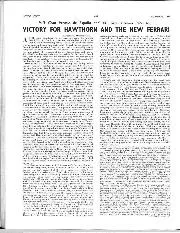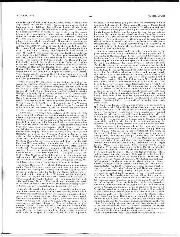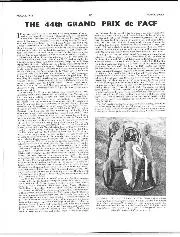More than 40sec ahead after 42 (of 67) laps, his victory bid hampered now by slackening rain and improving visibility, Hawthorn could do nothing – although he did cheekily repass briefly – about the recovering Villoresi. He would, however, have staved off Brazilian ‘Chico’ Landi’s Ferrari for second but for an ominous clanking noise – his 2-litre’s flywheel had loosened – that forced him to reduce rpm. Even so the star of the show finished a lap ahead of the next-best Formula 2 competitor – and had lapped a BRM twice before it retired.
Enzo Ferrari, like Fangio and Villoresi, had taken note and in 1953 Hawthorn’s promotion ahead of Moss as ‘Brit Most Likely’ was confirmed by his signing to drive the best GP car for the biggest team. As he had with his Cooper, he did not break step: fourth in the Argentine GP of January, third in a Formule Libre event at Buenos Aires and second in the non-championship Pau GP, plus victories in May’s International Trophy at Silverstone and Ulster Trophy at Dundrod. He finished fourth at Zandvoort’s Dutch GP in June, too. And when team leader Alberto Ascari, reigning world champion and winner of the past nine Grands Prix, shrugged to say, “Take it away; I can’t go faster!” this blithe, spirited Englishman assumed the role…


French Grand Prix
Reims, 5 July, 1953
Hawthorn qualified seventh but was in the leading slipstreaming mix from the off. His was exalted company: all three world champions plus Villoresi and, his Maserati on half-tanks, the haring José Froilán González. As such, not until the last 10 laps (of 60) did Hawthorn, in his ninth GP, dream that he might win. So he and Fangio grinned at each other – whereas ‘Nino’ Farina scowled in concentration – as they diced back and forth, and they continued to do so even after the Englishman had nerfed the Maserati’s tail under heavy braking.
At the last corner of the last lap, with the one-stopping González closing rapidly, Hawthorn outfumbled Fangio and ducked down for the long straight run home – and won by 1sec. Yet this ‘Race of the Age’ almost hadn’t happened. Only at the last minute did Ferrari rescind a threat to withdraw in response to its disqualification from the lead of the accompanying Reims 12 Hours sports car event.

















